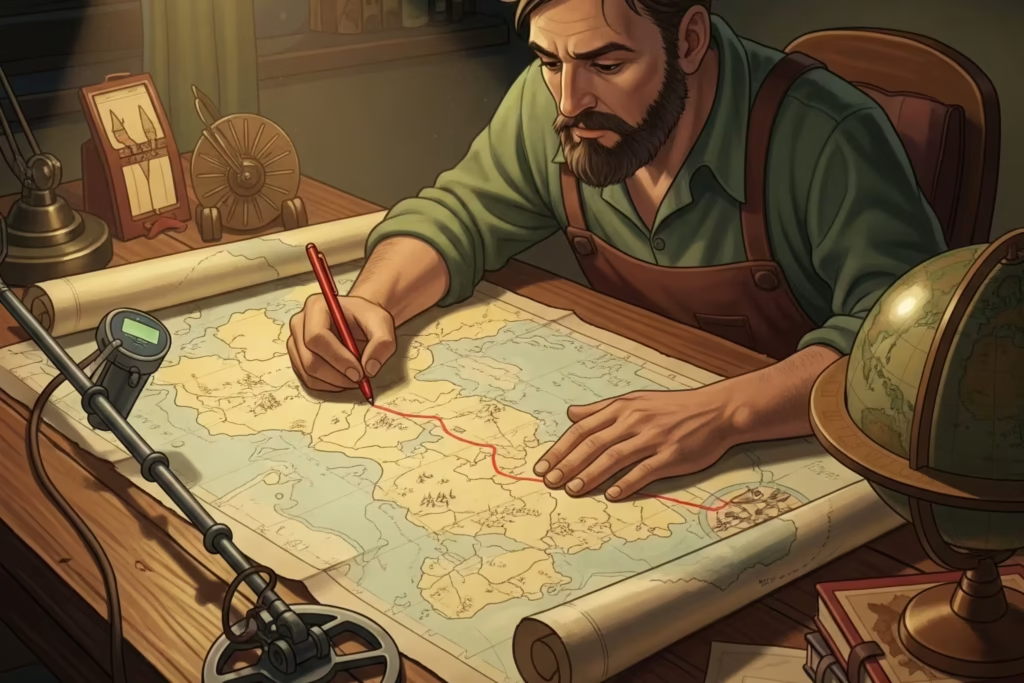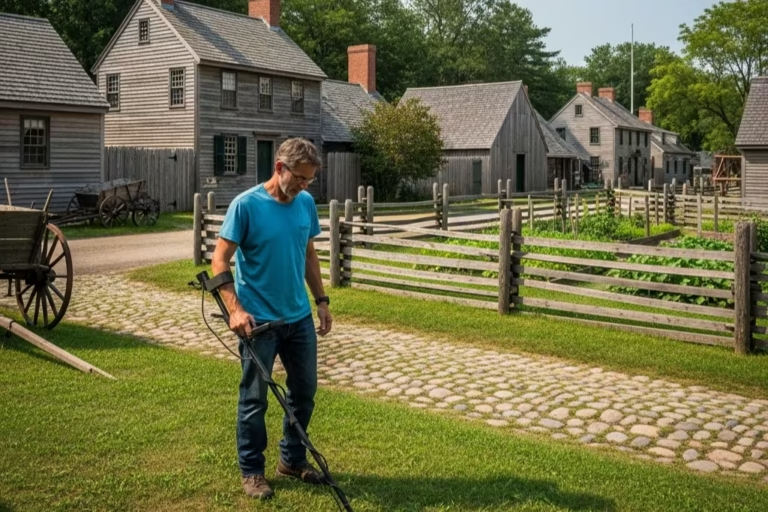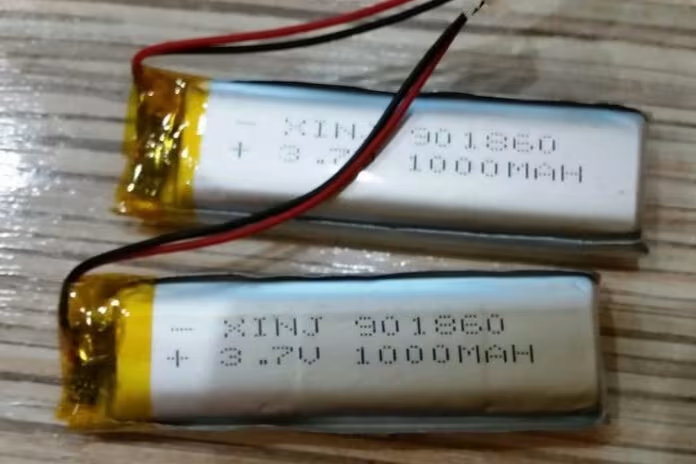I still remember the rush of excitement when my detector first signaled over what turned out to be a 1749 Spanish real at an old Massachusetts homestead. After six months of researching local records, obtaining written permission, and countless hours scanning empty fields, that coin connected me directly to America’s colonial past in a way no museum display ever could.
If you’re drawn to the thrill of unearthing pieces of early American history, you’re not alone. But before you grab your detector and head to the nearest historic site, there’s crucial information you need about permissions, identification, and ethical practices. I’ve learned some of these lessons the hard way, and I’m sharing them to help you enjoy this rewarding hobby responsibly.
Metal Detecting Permission: Navigating Legal Requirements

The legal landscape for metal detecting at colonial sites is complex and often frustrating. I discovered this firsthand when I excitedly drove two hours to a promising location only to learn I couldn’t legally detect there.
Federal regulations are the most stringent. The Antiquities Act of 1906 prohibits excavation of antiquities from protected lands without permits, while the Archaeological Resources Protection Act (ARPA) governs excavation on federal and Native American lands. The National Park Service takes this a step further – I once made the mistake of even bringing my detector to a national historic site parking lot, only to learn that possession of metal detectors is prohibited on these properties.
State and local laws vary wildly. My detecting buddy Steve focuses on Virginia sites and had to obtain a special use permit directly from the park manager to legally search designated beach areas. Meanwhile, I’ve found Massachusetts to be particularly restrictive around colonial sites, though a conservation officer once told me about a little-known provision allowing limited detecting in certain previously disturbed areas – information not readily available online.
Private property has been my most productive hunting ground, but it requires diligence and people skills. I’ve had better luck approaching landowners with colonial-era homes by offering to share findings and history rather than asking permission outright. Always get written permission, though – a handshake agreement led to an uncomfortable confrontation with local police when a property changed hands during my detecting project in rural Connecticut.
Even with permission, I once had to halt a promising search when the landowner mentioned their property was listed on the state historical register. Properties with known Native American sites or registered archaeological significance remain off-limits regardless of ownership – a fact I respect even when tempted by potential discoveries.
Identifying Your Metal Detector Discovery: Resources That Actually Help

When I first started, I couldn’t tell a colonial button from a 19th-century one. My breakthrough came with “A Guide to Artifacts of Colonial America” by Ivor Noël Hume. This book has saved me from overlooking valuable finds and from embarrassing myself by getting too excited about relatively modern objects. Professional archaeologists consider it their “Bible” for identifying items from the 17th-19th centuries, and it’s transformed how I evaluate potential finds.
For my detecting trips to Virginia, “Discovering Virginia’s Colonial Artifacts” by Bill Dancy proved invaluable. The section on research methods led me to old county maps that revealed colonial-era roads and homesteads not marked on modern maps. My most significant find last year – a set of colonial shoe buckles – came from a site I identified using Dancy’s techniques.
Through painful trial and error (and some humbling corrections from more experienced detectorists), I’ve learned to identify common colonial artifacts:
I once spent hours researching what I thought was a rare colonial coin, only to discover it was a common 19th-century token. Now I know authentic Spanish reales by their irregular shapes and distinctive shield designs. My friend Jake taught me that genuine colonial buttons typically have shanks that differ significantly from those produced after 1850 – a detail that’s saved me from misidentifying numerous finds.
After mistaking modern debris for historic items too many times, I joined a regional metal detecting forum. Posting photos of my uncertain finds there has been educational, and I’ve developed friendships with detectorists who specialize in colonial-era items. Last year, Peter from the forum helped me identify a crushed thimble that turned out to be from the 1730s – something I would have overlooked without his expertise.
Ethical Practices From Someone Who’s Made Mistakes

I won’t pretend I’ve always done everything perfectly. Early in my detecting journey, I didn’t document my finds properly, and I still regret not knowing exactly where some of my earliest discoveries came from. Now I use a GPS app to mark find locations, measure depth, and photograph items in site before removal. This documentation has not only enhanced my personal collection but allowed me to contribute data to a regional historical society’s research on colonial trade patterns.
I’ve learned to be meticulous about site restoration too. Nothing damages our hobby’s reputation more than leaving unfilled holes or trash behind. I once returned to a productive field to find it closed to detecting because another hobbyist had left it looking like a bombing range. Now I carry a proper digging tool and ensure each plug of grass is carefully replaced – the farmer who owns my favorite detecting site says he can’t even tell where I’ve been.
Significant discoveries deserve proper reporting. When I unearthed what appeared to be Revolutionary War-era military items near a known encampment site, I contacted our state historical preservation office. The archaeologist who responded not only helped identify the objects but invited me to participate in a formal archaeological survey the following summer – an experience that transformed how I approach the hobby.
I’ve found tremendous value in collaborative opportunities with professional archaeologists. Last year, I participated in the U.S. Forest Service’s “Passport In Time” program, working alongside archaeologists on a colonial-era site. We detectorists helped identify artifact concentrations that conventional archaeological methods had missed, while the professionals provided context and proper recovery techniques that improved my field skills immensely.
Answers to Questions I Wish I’d Asked Sooner

After fielding questions from newcomers to historical detecting, I’ve compiled answers to common concerns:
“Can I detect on old colonial roads?”
Most are now either modern roadways (where detecting is unsafe) or on protected lands. I spent a fascinating weekend detecting along an abandoned colonial-era post road in New Hampshire, but only after confirming with local officials that it was legal and obtaining permission from adjacent landowners.
“How do I clean my colonial finds?”
Go slowly! My worst mistake was aggressively cleaning a rare colonial coin, significantly reducing both its historical and monetary value. For most metal items, I now use nothing more than a soft toothbrush and distilled water. For significant finds, I consult with a conservator at our local historical society before attempting any cleaning.
“What if I find something potentially significant?”
Document everything and seek expert advice. When I discovered what appeared to be foundation stones with colonial-era artifacts, I halted detecting and contacted the state archaeologist. That site is now being properly studied – something far more valuable than whatever I might have found there on my own.
Finding Your Path in Colonial Metal Detecting
Metal detecting at colonial American settlements connects us directly to our nation’s origins through tangible objects. I’ll never forget holding a corroded button that might have been worn by someone during the Revolutionary War, or finding a Colonial copper with a date older than the United States itself.
The hobby requires research, patience, and ethical practice, but the rewards extend beyond personal collections. Through responsible detecting, we can contribute to historical knowledge while experiencing the thrill of discovery. Whether you’re searching New England town commons, Virginia plantation grounds, or Pennsylvania colonial routes, approaching the hobby with knowledge and respect ensures these fragile links to our past will remain for future generations to study and appreciate.
The most meaningful aspect for me hasn’t been the items themselves, but how each discovery has deepened my understanding of early American life. That Spanish real I mentioned earlier? It led me to research colonial currency systems, trade routes, and daily commerce in ways no textbook could match – a journey of discovery that continues with each signal from my detector.

My name is Paul and I am the founder of Detector For Metal, a dedicated resource for metal detecting enthusiasts seeking to uncover historical treasures and connect with the past using the latest technology. As a stay-at-home dad and family man, I’ve found metal detecting to be the perfect hobby that combines family adventure with historical learnings for the whole family.
As a father, I’m deeply committed to passing on this hobby to the next generation of detectorists, starting with my own children. I share advice on everything from metal detecting with kids to exploring the top 10 metal detecting sites you never thought about. My methodical approach to the hobby goes beyond the thrill of discovery—it’s about creating family traditions while preserving history and sharing the stories of those who came before us.


